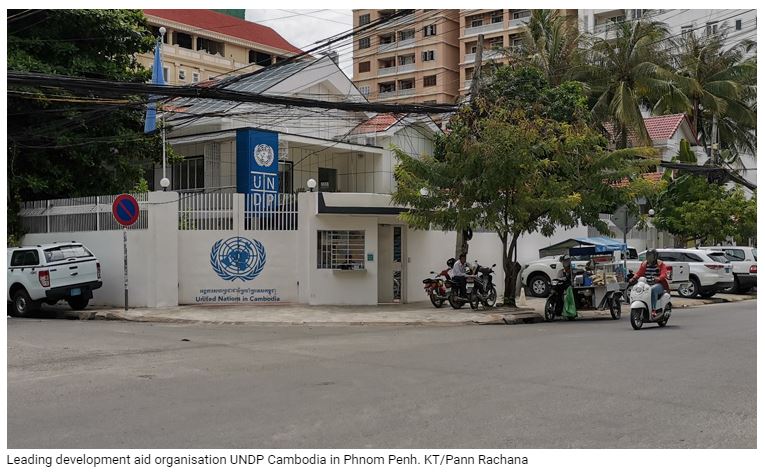Cambodia: Overall development assistance transparency improving
The triannual “Publish What You Fund” international aid transparency index was released on Wednesday, ranking several prominent Cambodian development donors and stating that overall transparency is improving.
Launched in 2008, the independently researched index measures how transparent and available development aid data is using 35 indicators. These indicators are then grouped into five components: finance and budgets, joining-up development data, organisational planning and commitments, project attributes and performance.
The index then collates these five categories to provide an overall score out of 100.
Prominent local development donors leading the index this year were the Asian Development Banks Sovereign Portfolio (98), United Nations Development Fund (96.6), United Nations Children’s Fund (92.9) and the Global Fund (86.5).
US AID (76.7), German Economic Cooperation and Development (72.3), Korean Agency (70.7), French Development Agency (58.5) Australian Department of Foreign Affairs (51.8) ranked in the middle to upperareas. Japan International Cooperation Agency (49.3), United Kingdom Foreign & Commonwealth Office and China Ministry of Commerce (1.2) ranked in the bottom half of the index.
Khmer Times spoke to both the Asian Development Bank (ADB) and the United Nations Development Fund (UNDP) on the policies and procedures their organisations
have implemented to ensure they remained transparent.
“The UNDP is strongly committed to open and transparent development. We have a one-stop transparency online portal… this portal holds details on more than 10,000 projects worth more than $5.7 billion in annual expenditure from around the world – including our work here in Cambodia,” Nick Beresford, UNDP Cambodia’s Resident Representative said.
“We also have a local social media and country office website with lots of articles, blogs and other information. Corporately we have a strict set of policies and rules that help us maintain a strong culture and practice of publishing what we pay and sharing full information on all our programmes,” he added.
“The ADB adopted its Access to Information Policy (AIP) in 2018. The objective of the AIP is to promote stakeholder trust in ADB and to increase the development impact of ADB activities,” Agnes Marie Surry, senior planning and policy specialist at the ADB said.
“The policy reflects ADB’s commitment to transparency, accountability and participation by stakeholders in ADB-supported development activities in Asia and the Pacific,” she added.
In response to what changes the organisations want in the local aid community Beresford said, “Governments, NGOs and civil society organisations consistently ask those of us working in development to coordinate better together.”
“An essential first step is for all development partners to be open on where their money is coming from, where it’s going to and the kind of results they are achieving,” he added.
According to the “Publish What You Fund” organisation the overall levels of transparency in the 2020 index, “shows significant improvement in donors’ overall transparency compared to 2018”.
As eleven donors moved into the “very good” category, an increase of four from 2018. The number in “good” increased by two, to 15. This means that more than half of the 47 donors assessed are now in the “good” or “very good” categories.
“This shift towards greater transparency consisted of many donors making incremental improvements in their aid transparency and of individual donors making wholesale changes to their publication practices, leading to significant jumps in their scores,” the organisation said. “The improvement in scores reflects that donors are publishing increasingly more, better-quality data in the International Aid Transparency Initiative (IATI) Standard.”
Recommendations for aid organisations to improve their score included more comprehensive data -sharing about the results plus the impact of their projects and also the publishing of more project budget documents, project procurement information (contracts and tenders) and sub-national locations.
It also recommended that donors should engage directly with stakeholders in partner countries to raise awareness about the available data, build trust and establish feedback loops for continuous improvement.
Since the Paris Peace Accords in October 1991, it is estimated that Cambodia has received in excesss of $20 billion in foreign aid assistance.
Source: https://www.khmertimeskh.com/50738183/overall-development-assistance-transparency-improving/


 Thailand
Thailand




